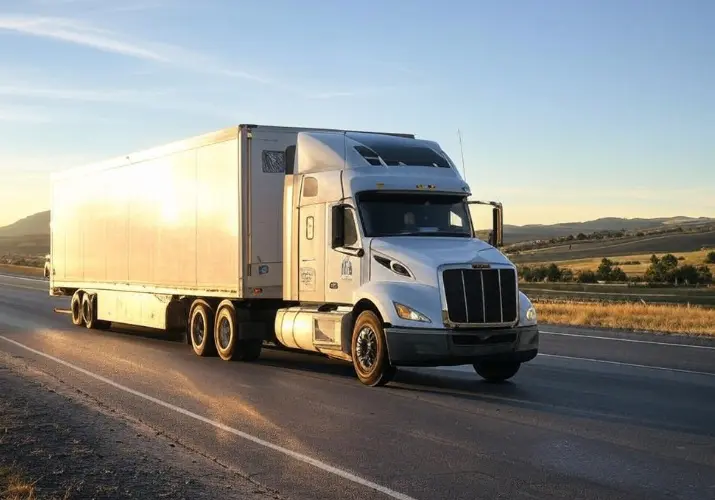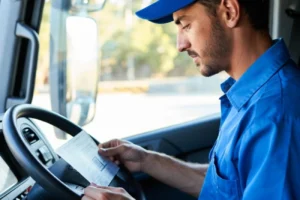Every spring, Easter brings color, sweetness, and joy to families across the United States. But few people stop to think about how all those Easter goodies actually get to their destination. Behind the scenes, it’s America’s truckers who make it all happen—mile by mile.
Every spring, Easter brings color, sweetness, and joy to families across the United States. Children hunt for eggs, gift baskets overflow with treats, and store shelves fill with pastel-colored candies. But few people stop to think about how all those Easter goodies actually get to their destination. Behind the scenes, it’s America’s truckers who make it all happen.
No Easter Without Truckers
From massive factories like Hershey in Pennsylvania, Mars in Illinois, and Ferrero in New Jersey to small artisanal chocolate makers, Easter eggs travel hundreds—and often thousands—of miles before they ever reach your local store. And the entire journey depends on the hard work of truck drivers who keep the supply chain rolling.
For many logistics companies, Easter marks a peak shipping season, with a huge spike in candy shipments from February through Easter weekend. Truckers haul tons of fragile, temperature-sensitive sweets that demand careful handling, coordinated schedules, and the right equipment.
Sweet and Delicate: Transporting Chocolate Isn’t Easy
Chocolate doesn’t like heat. One of the biggest challenges of transporting Easter treats is keeping them cool and intact. If chocolate melts in transit, it loses quality and often can’t be sold. That’s why many trucking fleets use refrigerated trailers or stick to nighttime routes to protect their precious cargo.
Easter chocolates often come in shiny, colorful wrappers or in decorative boxes, making them even more delicate. Drivers and logistics crews must handle them with care to ensure they arrive in perfect condition.
“Hauling Easter candy isn’t like moving cereal boxes. You treat them like little treasures,” says Alan R., a driver for a logistics company based in Ohio.

Did You Know?
More than 90 million chocolate bunnies and 180 million Easter eggs are sold in the U.S. every year.
The Easter candy industry generates over $3 billion in sales in April alone.
Major carriers like UPS, FedEx Freight, and countless independent trucking companies ramp up operations to meet the seasonal demand.

The Hidden Engine Behind the Celebration
Beyond the chocolate bunnies and jelly beans, there’s a key piece of the Easter puzzle that often goes unrecognized: truckers. These hardworking men and women wake up early, cover long routes, and drive with precision so that every sweet treat makes it to stores—and ultimately to baskets across the country.
So next time you unwrap a chocolate egg on Easter Sunday, take a moment to appreciate the journey it made—and the driver who made it happen. Because behind every Easter delight, there’s a story of dedication, logistics, and countless miles on the open road.

Women’s safety in the transport sector: urgent priorities
International Day for the Elimination of Violence against Women is observed today, November 25. International Day for the Elimination of Violence against Women is observed

Federal CDL policies linked to thousands of lost trucking jobs
Federal government measures regarding CDLs and English-language proficiency requirements have resulted in the loss of thousands of jobs in the trucking industry. Federal government measures

Thanksgiving 2025: Weather and Road Conditions Across the U.S.
Thanksgiving 2025: What Truckers Need to Know About Weather and Road Conditions Across the U.S.

Comprehensive Guide to the New Federal Rule for Accessing CDL Licenses
The federal government has redefined who can apply for, renew, or retain a Commercial Driver’s License (CDL), introducing new restrictions for migrants and issuing direct

What drivers want: more mileage, more pay
The results of the annual Commercial Carrier Journal survey, conducted in collaboration with Netradyne, “What Drivers Want,” have now been published. The results of the

U.S. Unveils 1st Female Crash-Test Dummy, Sparking Debate: Are Accidents Different for Men and Women?
The new THOR-05F marks a milestone: for the first time, a crash-test dummy accurately reflects the female anatomy. Officials argue that decades of safety testing based on male-bodied models left women more vulnerable to severe injuries. The announcement aligns with the administration’s broader push to reintroduce biological sex classifications in medical and safety policy.
